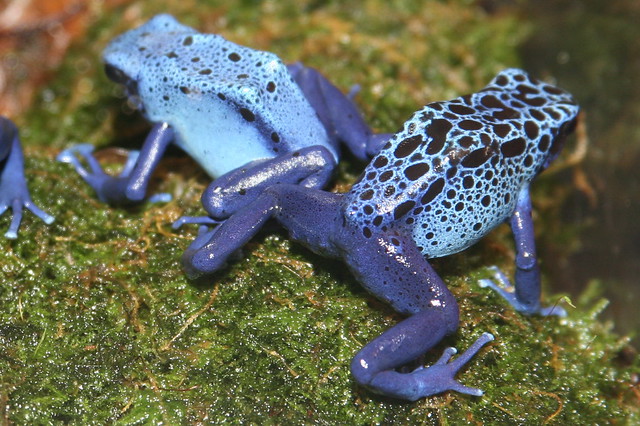 |
| Australian Land Hermit Crab (Coenobita variabilis) - Photo: Flickr |
Pets have made a difference in many people’s lives for a long time. The most popular pets have been pets such as cats, dogs, and fish. Within the past few years or so, Land hermit crabs have become a very popular pet in the small pet market. Many people have realized that they make fascinating pets. If a person decides to make the choice of a land hermit crab for a pet, there are several ways to make sure the crab is comfortable, healthy and happy. These ways include making sure the hermit crab has proper food and water, the proper environment and proper hygiene and care.
One of the first ways to keep a pet hermit crab healthy is the proper hermit crab food. Many people have many different ideas about the healthiest diet for a hermit crab. There are three popular diets for land hermit crabs. One diet choice is simply to feed your land hermit crab basically the same things you eat. Numerous people feel that feeding hermit crabs small bits of cooked meats, raw veggies, and fresh fruit is the best way to nourish your crab. This is, indeed, a healthy way to feed your crab because, in the wild, hermit crabs are scavengers. They are definitely not picky creatures. Other popular diet choices include fish flakes and crab food pellets or granules. These are also acceptable ways to nourish your crab. Whatever type of diet you choose for your pet, a treat every now and then is a great way to break up your hermit crab’s diet. Small pieces of fruit and veggies and the occasional piece of cooked meat are great ideas for treats.
Water should be clean, fresh, dechlorinated water. Dechlorinators are available but can become expensive over time. Bottled, filtered water is acceptable. A dish of salt water and a dish of fresh water is required to drink and soak in for your crab.
Another way to be able to keep your hermit crab healthy and happy is to make sure your crab has the proper environment in which to live. To make your hermit crab habitat, needed first is a container. A housing can be as basic as a 10-gallon aquarium or a reptile habitat. Make sure your crab habitat is roomy enough for toys and food and water dishes. Your crabby also needs room to roam. If you wish to get more than one hermit crab, which is recommended because they are very social creatures, you must keep this in mind when thinking about space in your crab habitat.
Other environmental issues exist. The substrate is what goes in the bottom of the habitat. Sand, coconut fibre, or small crab gravel can be used. Humidity and temperature should be approximately 70% and 72°. This is important to keep their gills moist and to give them an environment to which they are adapted. Toys are very important to keep the crab happy. Things to climb on, hide under, and push around are great things to put in your pet’s habitat to increase the hermie’s enjoyment.
The third basic thing that is needed is proper care. Proper care of your crabby includes bathing it once a week in purified dechlorinated water, feeding according to the directions of the chosen diet, spritzing your crabby and its environment to keep constant humidity, and paying attention to your little friend.
These are the basics when it comes to keeping your hermie very healthy, happy, and comfortable. There will be more information needed and research that needs to be done to be a great caregiver, but this information will get started and on your way to being the proud owner of a terrific pet that can provide great entertainment and can be a rewarding experience. Hermit Crabs are great pets.






